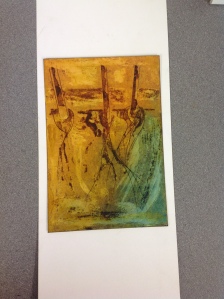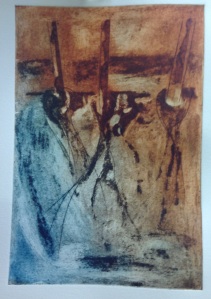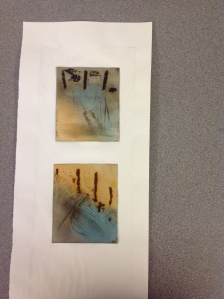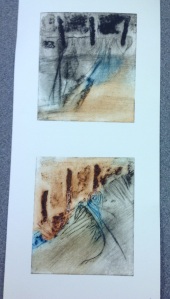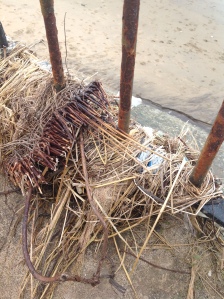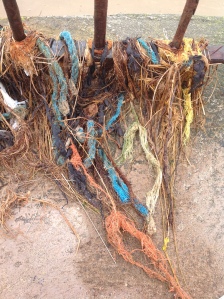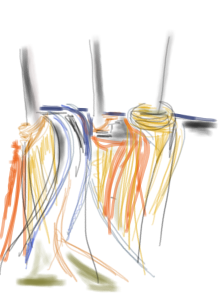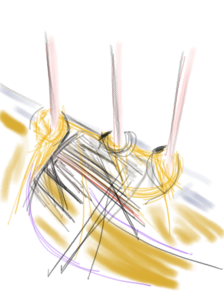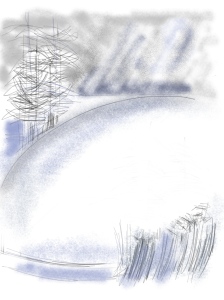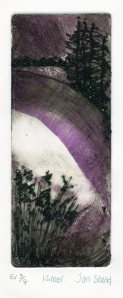The images of ‘Winter’ in the last post February 2014 are drypoint prints on Perspex plates using drypoint etching tools and a soldering iron. The technique affords an opportunity to create different density and depth in the line and some accidental marks which come when the soldering iron is lifted off the Perspex. It is a quick and simple method to make a plate. The plates themselves are fairly robust and can withstand an edition of at least 12. The Perspex does vary in thickness and surface, the best one to use is the ‘non reflective’ type because its surface is quite dull and once inked up holds a certain residue of ink giving an effective plate bloom. It also responds well to scratched lines and textures you can make using wire wool and or sandpaper. If you get the shiny one, which is the most common in DIY stores, you must be careful not to over-wipe the plate because the results are too stark. A tip here is to work some wire wool gently over the surface before you start etching, being careful not to make too obvious a mark.
Method:
Cut your Perspex to size and gently file the edge at 45 degrees, I like to round the corners slightly. De-grease the plate using a household cream cleaner, pat dry with kitchen paper. As the Perspex is transparent you can work on top of a drawing, painting or photograph if you wish. I prefer to have images for reference and work directly on the plate. Use any drypoint tool, nails, wire wool, sandpaper to make the finer lines and textures and the soldering iron for the bolder marks. Take care to work in a well ventilated space and don’t take too long using the soldering iron, once you can smell the fumes give it a rest! The marks are made easily, don’t press down too hard, you can get some expressive textures by dotting the iron into the plate, take care not to linger or you will go through. You will find some of these deeper marks don’t always fully ink up and they give some lively embossed marks. Ink up and wipe off in the normal way using scrim, the press pressure will depend on the press itself of course but I have found it to be similar to setting up for a collagraph on mountboard. Perspex plates respond well to local inking with a roller. Use a piece of glass, roll out a thin layer of ink, covering you roller and swiftly roll over the plate in a selected area.
Here is Autumn


